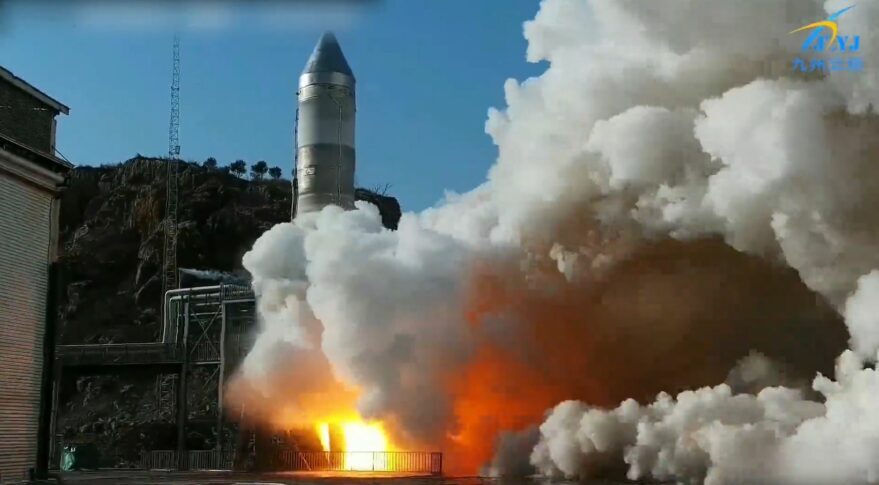20.01.2023

A combined system static fire test of a JZYJ Longyun-70 engine and Space Epoch steel tank. Credit: Jiuzhou Yunjian
HELSINKI — A Chinese launch startup has performed hot fire tests as part of development of a planned reusable stainless-steel rocket apparently inspired by SpaceX’s Starship.
Space Epoch recently performed a series of tests of a 4.2-meter-diameter stainless steel propellant tank combined with a Longyun-70 methane-liquid oxygen engine developed by engine maker Jiuzhou Yunjian. The tests took place at Jiuzhou Yunjian’s test site in Anhui Province.
The tests are part of Beijing-based Space Epoch earlier revealed plans to develop a 64-meter-tall stainless steel launcher capable of lifting 6.5 tons to a 1,100-kilometer-altitude sun-synchronous orbit. The launcher will be able to be reused up to 20 times.
The static fire tests included ignition and restart tests and ignition with low levels of propellant. The combined breakthrough of stainless steel storage tanks and liquid oxygen methane technology has laid a solid foundation for subsequent rocket flight tests, Jiuzhou Yunjian said in a statement.
SpaceX is meanwhile edging towards its first orbital launch attempt of the 120-meter-high, 9-meter-diameter Starship at its Starbase test site in Boca Chica, Texas.
As well as being inspired by SpaceX in terms of the combination of stainless steel tanks and methane-LOX engines, Space Epoch is also using an iterative approach, using a style akin to the SN/serial number designations for Starship development.
XZH-1 D1 was used for the recent combined system test. XZH-1 D2 will be used for a first suborbital sea splashdown recovery test during 2023.
Space Epoch is a most recent new entrant into China’s nascent commercial launch sector and has big ambitions. It secured an undisclosed amount of angel round of funding in August last year and later conducted pressure tests on 3-meter-diameter and 4-meter-diameter thin-walled stainless steel tanks.
Its press releases state that it is determined to become the leader of China’s interplanetary transportation system and contribute to the country’s national space infrastructure and requirement for increased launch capacity.
The firm also says it is targeting markets including point-to-point transportation, space tourism, space station construction, deep space exploration and planetary defense.
Jiuzhou Yunjian is a rocket engine startup founded in 2017 and was earlier selected by new Chinese launch startup Rocket Pi to power its Darwin-1 rocket, which could launch as soon as this year.
The state-owned Shanghai Academy of Spaceflight Technology (SAST), a major subsidiary of China’s main space contractor CASC, is apparently considering using Jiuzhou Yunjian’s reusable 70-ton-thrust open cycle Longyun engines for its own potential answer to the Starship challenge.
CASC’s other major rocket-making arm, the China Academy of Launch Vehicle Technology (CALT), has also presented a concept for a launcher drawing on the vision of Starship.
China’s first methane-LOX rocket and first commercial-developed liquid launcher, Zhuque-2, had a test flight last month. It failed to reach orbit following an issue with its second stage vernier engines.
Quelle: SN
